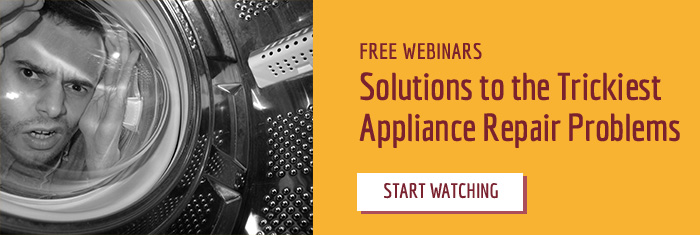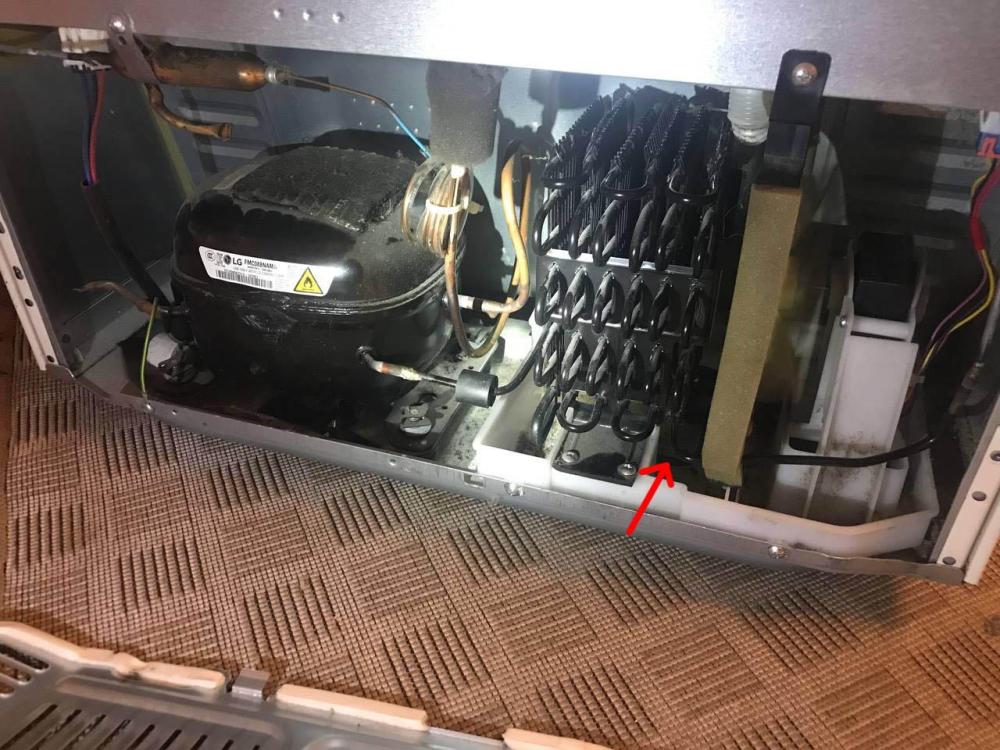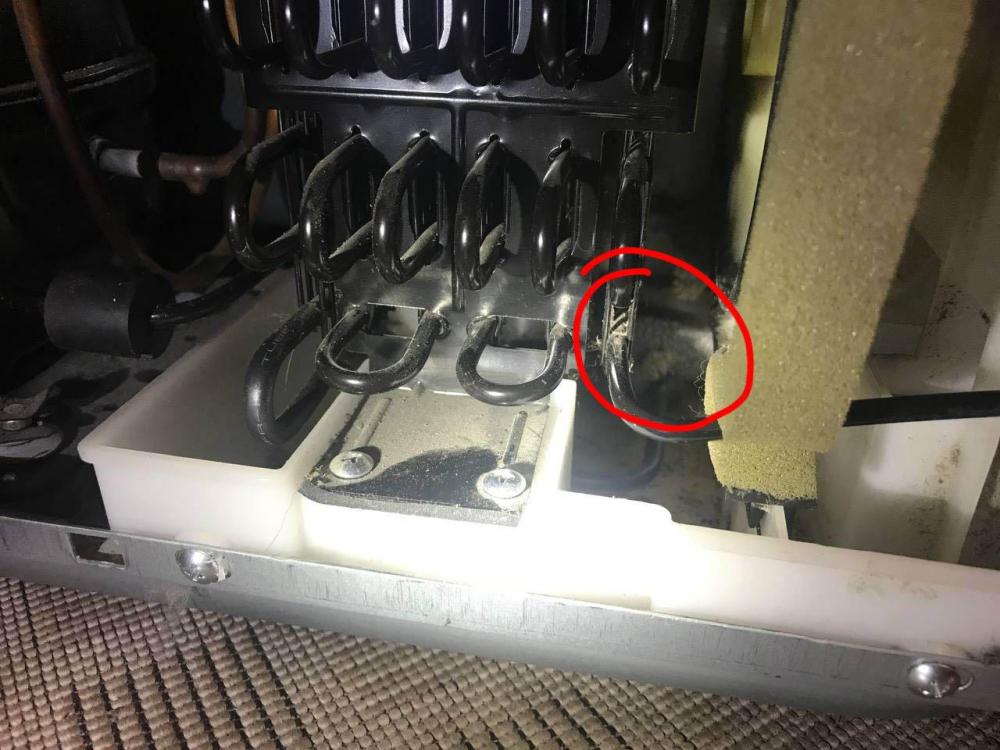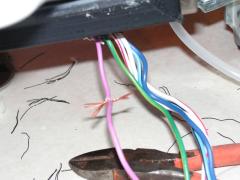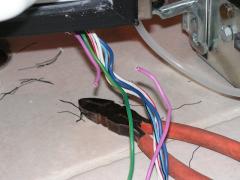FAQs | Repair Videos | Academy | Newsletter | Contact
Search the Community
Showing results for tags 'Repair'.
-

Sealed system repairs: the mystique, the reality
Samurai Appliance Repair Man posted a blog entry in Samurai Appliance Repair Man's Blog
Many professional appliance techs do not currently offer refrigerator sealed system repairs but are thinking about adding it to their service repertoire. In this post, I’ll offer some thoughts to help you decide if this makes sense for your service area. I'll also offer some resources for learning sealed system repair if you decide that makes sense for you. I encourage any of my Brethren in the Craft to post their comments and experience. The false mystique of sealed system repair First, understand that actually doing sealed system repairs is distinct from diagnosing a sealed system problem to begin with. Here’s the reality: it's easy to train PCMs on how to do sealed system work; it’s much harder to train technicians how to think and diagnose warm refrigerator problems correctly and cleverly. And you know what they say: If your only tool is a hammer, every problem looks like a nail. If all a guy knows is how to do sealed system work, guess what: every warm refrigerator problem looks like a sealed system problem. Yes, I actually know guys like this. In fact, I've found that a lot guys who do sealed system work don't actually understand how the sealed system works. I know, it sounds crazy! But that's the dirty little secret of sealed system work: you don't have to understand the thermodynamics of a refrigeration system, you just have to know how to follow a procedure and wield a torch. It's a PCM's wet dream! Doing sealed system work is a matter of following a procedure, paying attention to details, using some expensive equipment, reading pressure gauges and weight scales, and acquiring some degree of proficiency with brazing copper (and soon, Lokring). When I first started doing sealed system work 20+ years ago, there was a definite cool factor--playing with gauges, vacuum pumps, and torches just like in all the pictures. After I fixed my first one, I strutted around like a rooster, "Yeah, I'm a badass like those guys in RSES magazine!" But then I found sealed system work quickly became boring and repetitive and that troubleshooting refrigerator problems was a much more commonly needed skill and was also more interesting. Brazing copper lines seems to be the skill that most techs are in awe of. My dear old dad, Grant Brown (of blessed memory) owned Hillphoenix Refrigeration, a company in Conyers, GA, that manufactures commercial refrigeration systems. I worked there as kid growing up and during summers while I was studying engineering at the University of Georgia. Anyway, Grant Brown had a saying, “Any asshole can learn how to braze copper; it takes a highly paid asshole to learn how to weld steel.” The point is that in the range of physical skills required for metalwork, brazing copper is a relatively easy one and thus not highly compensated in the industrial world. Everett Ball was Grant Brown's star brazer, shaping and making the copper pipe connections on compressor racks (these were commercial multiple compressor systems to allow staged refrigeration capacity to more closely match the refrigeration load). Everett Ball was an absolute artist with copper. He could shape the pipe and make perfect hand-made solder joints first time, every time, 100% free of pinholes. But ol' Everett liked his beer... and his vodka, and his bourbon, and probably even sterno and lighter fluid if he ran out of those. Grant Brown bailed him out of jail for DUI more times than I can remember (he knew the judge from Rotary Club). Everett also couldn't manage money so he was always "borrowing" money from Grant, which only delayed his inevitable bankruptcy and losing his house. And then there were the divorces (yes, plural). He didn't have a very big vocabulary but he could swear to make a drunken sailor blush. Although Everett was not the sharpest knife in the drawer (to put it kindly), the man was a frikkin' Picasso with copper and torch. The point of that little story is this: don’t be freaked out about learning how to braze copper-- it’s a well-worn path that thousands of people with far less intelligence than you have mastered. A little practice with some silver solder and copper pieces and you’ll get it. Adding sealed system repairs to your service offerings Having plucked the bloom of mystique off the sealed system rose, I’ll go on and discuss doing sealed system work from a business standpoint. Let me say right off the bat that doing sealed system repairs in the right circumstances is very high margin and profitable work. But the circumstances are all-important. I’ll talk about the good, the bad, and ugly. The length of time to complete a sealed system repair can vary from about two hours to half a day or more. The big variable is locating the leak and the difficulty in making the repair depending on where it is. Sometimes, it’s a slam dunk because it’s a known problem and the manufacturer has put out a service bulletin on it. For example, the leaky evaporator problems with some Whirlpool models and older Sub-Zero models. Other times, you have to use dye or some other leak locating technique to pinpoint the location of the leak. And then you may find the leak is in a location that’s difficult to access and physically awkward or nearly impossible to braze in. These stretch out the repair time and make for painful, tedious repairs. As you might gather from the foregoing, doing sealed system work as a warranty servicer is often a losing proposition. If you connect with the wrong company, you are essentially whoring out your time like a two-bit hooker and the manufacturer is completely exploiting you as such. Why do some of them do this? Because most servicers don't have enough self-respect to "just say no" and negotiate a fair compensation rate. The exceptions here are some high-end manufacturers like Sub-Zero because 1) they actually pay a reasonable rate for warranty sealed system work (without having to haggle) and 2) the COD referrals alone make it worthwhile. How about a business doing only COD sealed system work? Great gig if: you can get enough of it, you don’t like to think much (i.e., troubleshoot), and you have a high tolerance for repetitive, manual labor. But, yes, it would be high margin, high paying work relative to say, doing repairs on a throw-away Whirlpool vertical modular washer. But what if you could book two to four service calls on quality cooking appliances, either high-end brands or the upscale offerings of mainstream brands, in the same time span as one sealed system repair? Job average on high-end appliances is about $400 with an average time of about an hour each. Now you’re talking about: comparable or even more money, more customers taken care of, much less tedium, and you don’t come home feeling like you’ve been hit by a Mack truck from huffing solder fumes and working in a cramped, awkward position all day. But doing these other types of jobs profitably does require more diagnostic expertise and understanding appliance technology. Let’s look at a couple of case studies as illustrative examples. Case study 1: 11 year old Amana FDBM refrigerator, MN AFB2534DEW, retailed new for $1,300. Start device failed open and subsequently compressor start winding also failed open. Needs new start device (PN W10613606), compressor (PN W10309989), and filter dryer (PN WPW10143759 - replacing the filter dryer is SOP on any sealed system repair). Quoted Blue Book repair fee: $1,003.14 Question: How likely is it that the customer will opt for the repair given 1) the age, 2) what they paid, and 3) that they can get a new one for about $1400? Answer: A near-zero percent chance. Case study 2: 11 year old Sub-Zero 700TFI built-in all-freezer, retailed new for $6,985. Open winding in 3-phase compressor. Needs new compressor (PN 7002026), upgraded control board (PN 4204380), and filter-dryer (PN 3014230). Quoted Blue Book repair fee: $1,449.98 Question: How likely is it that the customer will opt for the repair given 1) the age, 2) what they paid, and 3) what it would cost to purchase and install a new one? Answer: Extremely likely. Do you see a pattern here? Because of the cost of doing sealed system work, you probably won’t be doing much of it on lower to mid-level appliances unless you signed a “sucker’s contract” with one of the manufacturers who don’t pay very much for sealed system work. Do your homework and negotiate the rate! Moral of the story: You probably won’t do much profitable sealed system work unless you’re working on high-end and usually built-in refrigerators such as Sub-Zero. As mentioned before, if you can get a Sub-Zero authorized servicer contract, this would be a big boon to your business. Pretty much anyone else: fuggetaboutit. (Your market may vary: do your research!) The 90-10 rule Finally, let's keep in mind an important rule of thumb: over 90% of the normal mix of refrigerator calls you run will be due to a control problem, not a sealed system problem. So you need to ask yourself if it's worth tooling up for sealed system work ($1,500 to $2,000) for what will amount to less than 10% of the refrigerator calls you run. Seems to me you'd want to make sure you have the 90% calls dialed in first, that you're able to accurately troubleshoot control problems because that's where most of your money will be made. The 90-10 rule also means that if you're going to offer COD-only sealed system repairs to your customers, you're going to have lots of expensive equipment and sealed system doo-dads and nick-nacks sitting around not being used most of the time, cluttering up your shop or truck. Of course, the foregoing comments do not apply if you have a lucrative Sub-Zero authorized servicer contract- in that case, doing sealed system work is a no-brainer. Handling "gray areas" What if you don't offer sealed system repairs, you run a warm refrigerator call and diagnose a sealed system fault- how do you handle this with your customer? As we saw previously, if it's a lower- to mid-level refrigerator then it almost certainly doesn't make sense for the customer to have a sealed system repair anyway. You would advise them of this and collect your service call fee. The gray area is the "affordable luxury" line, such as the $3,000 Samsungs or LGs. This is a tougher call because a COD sealed system repair would make sense here. And diagnosing a sealed system fault in these models requires more technical finesse, so you will definitely earn your service call fee. But we may have a perception issue with the customer. How do we handle this? First, recognize that this situation is the rare exception, not the rule, and we don't structure our business systems around exceptions. You definitely need to charge something otherwise you're sending the message that the valuable skill you just provided in diagnosing the problem isn't worth anything. An easy customer perception management technique is to give a discount off your service call fee, say $25. This feels like a significant discount to most people and usually preserves good will. EPA "certification" The EPA has some silly regulations based on politically-motivated "science" requiring refrigerant recovery. The short story behind these regulations is that Dupont's patent on R-12 (a CFC refrigerant) was expiring so they funded lots of "studies" at American universities purporting to show that CFC molecules caused ozone depletion. How do I know this? I was a graduate student in Environmental Systems Engineering at Clemson University in the mid- to late 80's when these studies were being funded and carried out. Everyone knew Dupont was funding these studies and the bullshit agenda behind them but the political fix was in. So now to purchase refrigerant and do sealed system work, you have to have an EPA "certification." You'll occasionally come across guys swaggering about getting their EPA certification. The way you hear some of them cluck, you'd think they'd been inducted into Mensa. Or that they must be wizards with a rare understanding of the thermodynamics of refrigeration cycles and keen, penetrating insight into the intricacies of using a pressure-enthalphy graph to design refrigeration systems. Time for a reality check... To work on residential refrigeration sealed systems, EPA requires that you have a "Section 608, Type I" certification. Section 608 refers to the regulatory code. What do you think that the EPA, being yet another dumbass government regulatory agency, cares about with these silly tests? Thermodynamics? Pressure-enthalpy graphs? Not even close. These tests are conspicuously void of any science or engineering. All the the EPA cares about is that you can parrot back the regulatory requirements for each certification "Type." The "Types" just refer to the size of the refrigeration system as defined by the pounds of refrigerant used in the system. You can get a Type I certification by taking a quick online, open-book quiz. Here's one of hundreds of places that offer this. Download their regulatory study guide, parrot the answers back on the open-book quiz and, behold!, you are now a "certified" refrigeration technician... in the eyes of the EPA. In other words, you don't need to know the first thing about how refrigeration systems work but as long as you can parrot back the right answers about the regulations, you, too, can be an EPA certified "technician" and write home to momma about it, "Look, Maw, I done got me a gubmint certification. Ain't you just so proud?" Yes, it's a minor hoop you have to jump through if you're going to do sealed system work. If you hear some guy bragging about getting an EPA certification like it was some kind of life accomplishment, then know that you are talking to someone who rode the short bus to school and would get gold stars for spelling his name right. I hope my comments have been helpful to you in charting your business course. I’ll leave you with some resources for pursuing sealed system repairs should you decide that’s where you want your business to go. If you’d like to get better at diagnosing refrigerators to determine if it’s the sealed system or (more likely) a control issue, then check out the Refrigerator Repair course at the Master Samurai Tech Academy. Any comments or questions? Please post them below. Good luck! Technical Documents: Refrigerant Recovery, Evacuation, and Charging Procedures Sealed System Training Manual from Electrolux Refrigeration Brazing and Evaporator Repair Lokring Repair Method Service Guide from GE Lokring Tube Connection System Service Manual from Whirlpool Instructional Videos: Brazing and soldering techniques Refrigerant recovery Evacuation and charging Replacing the filter dryer Replacing the compressor Flushing with R134a Complete discharge, evacuation, and refrigerant charge of a R600a system using the Lokring LOKBOX charging station- 26 comments
-
- 16
-
.png)
-

-
- sealed systems
- refrigerators
-
(and 2 more)
Tagged with:
-

Non-PCM Repair on a Jazz Board Refrigerator
Samurai Appliance Repair Man posted a blog entry in Samurai Appliance Repair Man's Blog
This is a newish Maytag jazz board refrigerator presenting with a warm FF and cold FZ. This was not your typical defrost failure. The failure here was the evaporator fan was not running. I troubleshot the problem without disassembling the freezer-- did it all from the jazz board. Even though this is a modern, computer-controlled refrigerator, what you're about to see are actually old skool troubleshooting techniques that have been largely lost in the appliance repair trade today: reading the schematic and understanding from it how the circuit is supposed to work knowing where to measure with my multimeter properly interpreting my meter readings to draw the correct conclusion about the real problem "jumping the switch" There were no visible failures or burn marks on this board. I had to deduce the cause of the problem from my meter readings and using my jumper wire to prove my conclusions. Come with me now on a journey of Total Appliance Enlightenment... If you can't quite follow or understand what I did in the video, fear not: You can learn how to troubleshoot like this, too! We love teaching electric circuit troubleshooting to people who want to learn this stuff. If you want to earn more money and have greater job satisfaction, enroll now in our Fundamentals of Appliance Repair training course. (PCM - Parts Changing Monkey)- 4 comments
-
- 10
-
.png)
-

-
- troubleshooting
- evap fan inop
-
(and 2 more)
Tagged with:
-
Whirlpool washer model # WTW4900BW1 repair help
bakermacgyver posted a topic in DIY Appliance Repair Help
My whirlpool washer would not agitate or spin, i replaced the clutch, hub, drive belt, and actuator all in one go. After calibrating and running the self test, it agitates but still will not spin. Any ideas on what else it could be?https://youtu.be/7yH8akP1h0U -
Hello. I have an LG ga-b499yecz refrigerator, and since yesterday it started audibly rattling/vibrating. I removed the back panel, cleaned it, lubed the fan, but the problem seems to be with the small piece of styrofoam on a condenser tube. When I applied pressure there, rattling noise stopped. I removed it entirely and abnormal noise went away completely. So the question is, can I use my fridge without this piece? Or does it serve some great purpose? There seems to be some kind of valve/flap on the condenser, but I don't know whether it's dependent of that piece of styrofoam. Thanks in advance.
-
kenmore Kenmore 795.7930 Refrigerator Evaporator Fan and Interior lights not turning on
Nohbdy820 posted a topic in DIY Appliance Repair Help
Full model number: 795.79304.901 My refrigerator's evaporator fan and interior lights are not working in normal operation. As far as I know, everything else works. The passageway between the freezer and refrigerator froze up over time, so when I noticed that the refrigerator was too warm, I removed all food and defrosted the whole thing. After plugging it back in, the interior lights worked again. But after I checked back after a few hours, the refrigerator was still warm. I researched this issue, which suggested that I check to see if the evaporator fan was running. It wasn't. Also, the interior lights stopped turning on again after the freezer cooled down. During my research, I found this Service Manual for a nearly identical model; Mine just doesn't have the door-mounted water dispenser. On page 28, it talks about Test Mode, which is activated using a button on the mainboard. I tried this out, and while test mode 1 was running, the switches for the lights and the lights started working again, and the evaporator fan spun up, just like they were supposed to. So at least I now know that my fan works, and so do the switches and the light bulbs, and that the wiring is intact. Again, as far as I know, everything else works normally. There was ice buildup on the coils, but not that much so maybe it could be explained by the lack of airflow? This assumption is based on what I've read about how a lack of airflow can cause ice buildup inside the freezer. I've heard that the issue might be the defrost thermister or the refrigerator thermister, but I don't know how to check them or replace them. If someone knows more about them, that's really what I need at the moment. How do I check thermisters to see if they work? How would I need to replace them? How would a faulty one explain my symptoms, where both the evaporator fan and the lights don't turn on? I do have a cheap multimeter (it can test for ohmage but not continuity) and a thermometer. Thanks for any and all help.- 2 replies
-
- evaporator fan
- repair
-
(and 1 more)
Tagged with:
-

Kitchenaid Refrigerator door wire harness 5
Samurai Appliance Repair Man posted a gallery image in The Appliantology Gallery
From the album: Refrigerator Repair
-
- kitchenaid
- refrigerator
-
(and 3 more)
Tagged with:
-

Kitchenaid Refrigerator door wire harness 4
Samurai Appliance Repair Man posted a gallery image in The Appliantology Gallery
From the album: Refrigerator Repair
-
- kitchenaid
- refrigerator
-
(and 3 more)
Tagged with:
-

Kitchenaid Refrigerator door wire harness 3
Samurai Appliance Repair Man posted a gallery image in The Appliantology Gallery
From the album: Refrigerator Repair
-
- kitchenaid
- refrigerator
-
(and 3 more)
Tagged with:
-

Kitchenaid Refrigerator door wire harness 2
Samurai Appliance Repair Man posted a gallery image in The Appliantology Gallery
From the album: Refrigerator Repair
-
- kitchenaid
- refrigerator
-
(and 3 more)
Tagged with:
-

Kitchenaid Refrigerator door wire harness 1
Samurai Appliance Repair Man posted a gallery image in The Appliantology Gallery
From the album: Refrigerator Repair
-
- kitchenaid
- refrigerator
-
(and 3 more)
Tagged with:
-
The fridge in the subject line has been looked at by a (terrible) technician. At first, freezer was cold, fridge was not - replaced the evap fan and it was back to working order. Then the power went out and likely surged. Fridge went dead - no compressor, no fans, no defroster nothing but lights and ice maker work after the power outage. The board-switch (looks like this http://www.appliancepartspros.com/frigidaire-board-switch-terminal-241739710-ap5645865.html) has no lights on, doesn't respond to resets, and beeps about once every 4 seconds without stopping. I suspect that the board-switch (it's the climate control module inside the fridge) is bad. Per manufacturer's recommendations, I unplugged, let sit with doors open, then replugged, then closed doors. This worked the first few times but the issue recurred. Now the fridge won't work at all. The tech said to replace the evap fan again, so I did. No change. I have the board-switch part linked above in the mail, but I'm concerned about spending money replacing a bunch of parts if the fridge is beyond reasonably priced help. I know both door switches work (lights turn on and off). Any tips for further investigation? I'm an avid DIYer with moderate experience, but I don't have much experience with refrigerators.
- 4 replies
-
- refrigerator
- repair
-
(and 1 more)
Tagged with:
-

New Appliance Service Manual added: LG Linear Compressor Service Tech Bundle
Samurai Appliance Repair Man posted a topic in Appliance Service Manual Requests Forum
LG Linear Compressor Service Tech Bundle View File A bundle of tech documents covering various aspects of diagnosing and servicing LG linear compressor sealed systems: Inverter blinking error codes Sealed system diagnosis Evaporator leaks Heat exchanger replacement Check valve location and refrigerant flow Sealed system service guide Capillary tube replacement and installation LG ASC payment incentive program Submitter Samurai Appliance Repair Man Submitted 11/09/2017 Category Appliance Repair Manual Pot Luck Supper-
- lg
- linear compressor
- (and 8 more)
-

LG Linear Compressor Service Tech Bundle
Samurai Appliance Repair Man posted a file in Appliance Repair Manual Pot Luck Supper
Version 1.0.0
914 downloads
A bundle of tech documents covering various aspects of diagnosing and servicing LG linear compressor sealed systems: Inverter blinking error codes Sealed system diagnosis Evaporator leaks Heat exchanger replacement Check valve location and refrigerant flow Sealed system service guide Capillary tube replacement and installation LG ASC payment incentive program-
- lg
- linear compressor
- (and 8 more)
-
Westinghouse RS645T water dispenser not working
dahbrown posted a topic in DIY Appliance Repair Help
Hi All, My Westinghouse RS645T fridge water dispenser is not working. When I wasn't home it blew the circuit breaker so I am not sure if it just file or went out with a bang. When I got home I could smell burnt electronics, just didn't know what/where until I went to get some water! The lights on the front control panel do not work. When I press the switch to dispense the water the solenoid operates and the light turns on, but no water or ice. I was wondering where the controlling board is housed and how I get to it to replace? Really appreciate any assistance. Thanks Dave -
1-323-90LAFIX 1-323-905-2349 LaReliableRepair@gmail.com www.LaReliableRepair.com From the business Specialties Best price and satisfaction guaranteed by our expert appliance repair team. We provide the following service: · 7 Days a week 8AM-9PM · FREE Service call with repair (If no repair is done there is a 30$ diagnostic fee) · FREE second appliance inspection if you get a repair or service from us · Dryer repair and service · Washing Machine repair and service ( Washer Repair ) · Dishwasher repair and service · Garbage disposal repair and service · Oven repair and service · Range repair and service · Microwave repair and service · Cooktop repair and service · Stove repair and service · Refrigerator repair and service · Trash compactor repair and service · All other Major Appliance Repair and service · Reasonable prices We repair and service most brands of appliances. We accept all major credit cards, cash and checks. For management Companies we have different pricing and billing options, please call for more detail. 1-323-90LAFIX 1-323-905-2349
-
- technician
- company
- (and 8 more)
-

GE dryer model DDE7209RALWW not working
Jennie Nelson Snipes posted a topic in DIY Appliance Repair Help
Hello. I have a GE dryer model DDE7209RALWW, which I've had for 22 years. It is having a problem, and I was trying to decide whether to fix it or replace it. I called a repairman to ask some questions, but haven't had him come yet. Someone in another thread said that it is one of the best dryers ever made, so I'd like to fix it instead of getting a new dryer. I don't know anything about fixing appliances, but my husband might try if we can get some help. Or at least to know whether to call the repairman or try it ourselves. The dryer has been repaired twice for fairly inexpensive problems, but unfortunately I don't remember what was done. The problem now: I pressed the start button, but it didn't start running at first. It made a long buzzing noise for about 4 seconds and then started, but it sounded noisy as it ran. I decided to let it run and see what happened. It did make some noises, but dried the clothes. I tried to start it again to see what would happen, and it made the drawn-out buzzing sound again but wouldn't start turning. Then I pushed the button again, and it won't do anything. Can you tell what might be wrong? Thank you! -

Kenmore 24" Laundry Center Model 417978127704
jjssportfishing posted a topic in Appliance Service Manual Requests Forum
Where can I get a repair manual for this washer Kenmore stackable model 417978127704...I have looked everywhere with no help! -
Service Manual Request for Kenmore Washer 110.22632100
GonzagaMadMan posted a topic in Appliance Service Manual Requests Forum
good morning, i am looking for the service manual for a kenmore direct-drive washer, model # 110.22632100 thanks!- 3 replies
-
- kenmore
- service manual
-
(and 3 more)
Tagged with:
-

GE Electronic Refrigerator Repairs Reference Card
Samurai Appliance Repair Man posted a file in Appliance Repair Manual Pot Luck Supper
-
- GE
- refrigerator
-
(and 2 more)
Tagged with:
-

New Appliance Service Manual added: GE Electronic Refrigerator Repairs Reference Card
Samurai Appliance Repair Man posted a topic in Appliance Service Manual Requests Forum
File Name: GE Electronic Refrigerator Repairs Reference Card File Submitter: Samurai Appliance Repair Man File Submitted: 22 Apr 2013 File Category: Appliance Repair Manual Pot Luck Supper Pub No. 31-9097 Click here to download this file-
- GE
- refrigerator
-
(and 2 more)
Tagged with:

